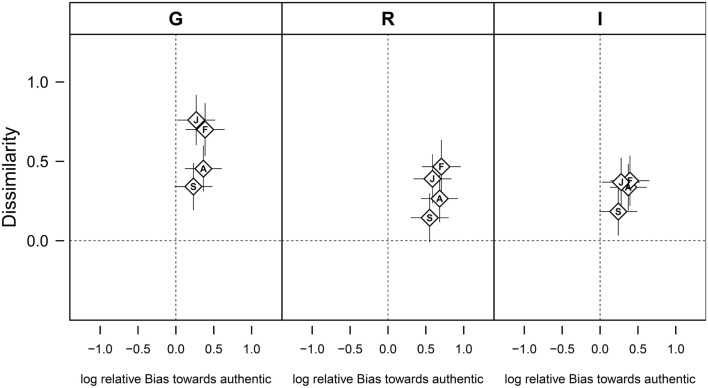Figure 2.
Discrimination of authentic and play-acted vocal expressions of emotions as assessed by choice theory. The discriminatory ability is described by the dissimilarity between authentic and play-acted stimuli (depicting how well the stimuli could be discriminated) and by the participants’ relative bias toward choosing authentic as a response, which are plotted against each other. The figure shows how these parameters vary in dependence of cultural affiliation (G – Germany, R – Romania, I – Indonesia) and the intended emotional content (A – anger, F – fear, J – joy, S – sadness). Positive values on the x-axis indicate a bias toward preferentially choosing the response “authentic,” while higher dissimilarity values indicates a better ability to distinguish the stimuli. Data are given are as means ± 95% confidence intervals.

